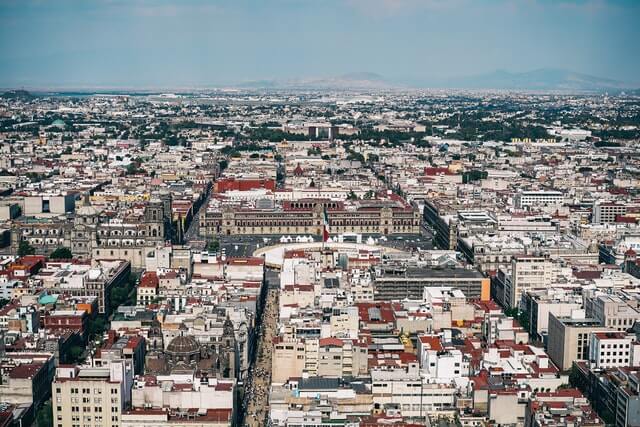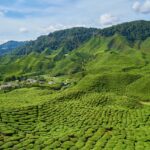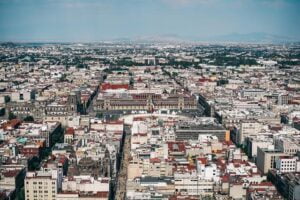
What does Human Environment Interaction in Mexico and Mexico City look like? The people of Mexico depend on their environment in many ways. The environment offers a lot of economic opportunities for Mexico and the people of Mexico.
Mexico has also been harsh on the environment in the past, mainly due to Mexico City and air pollution in Mexico, at one time being called the most polluted city on the planet.
But it has made great strides since then. We’ll have a look at the complete picture of the human-environment interaction in Mexico below.
If you need to learn about Human-Environment Interaction first, you can visit Human Environment Interaction Overview.
What’s an Example of Human Environment Interaction?
Pollution is an example of Human-Environment Interaction. Humans create lots of pollution that has an affect on the environment.
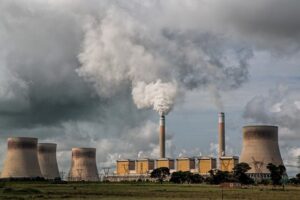
Two sources of pollution are cars and factories. These create pollution and toxic chemicals that are harmful to our health and the environment and the ozone layer. One of the biggest causes of concern is carbon emissions.
Transportation contributes to a third of greenhouse emissions and is responsible for killing around 800,000 people per year.
This article here will give you Examples Human-Environment Interaction.
What Are the Three Types of Human Environment Interaction?
In the Human Environment Interaction in Mexico and elsewhere, there are three types of Human Environment Interaction. They are:
- Humans Depend on the Environment
- Humans Adapt to the Environment
- Humans Modify and Change the Environment
You can find more info on the types of Human Environment Interaction at Three Ways Human Interact with the Environment.
What is the Environment Like in Mexico?
Mexico is near the equator, making the environment in Mexico a tropical and sunny climate with warm weather. There is a rainy and a dry season, and temperatures don’t change much from season to season.
Temperatures stay between 50 degrees and 90 degrees Fahrenheit and humidity averages around 70%. The areas with mountains and those that are higher above sea level see lower temperatures and lower humidity levels.
How Do Mexicans Interact with the Environment?
In the next sections, we will look at how Mexicans and the people of Mexico interact with the environment.
How Mexico Depends on the Environment
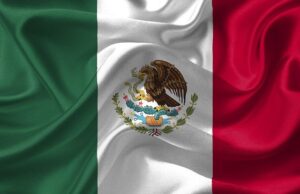
The people of Mexico are very dependent on their environment and geography.
How does Mexico depend on its environment? Many have agricultural and farming jobs, as well as mining jobs. Mexico has a vast coast on both sides, which also contributes to its ability to trade with other countries. For this reason, it has a lot of exports.
Tourism
Mexico also has a beautiful tropical climate near the equator, with many beautiful beaches as well. This fuels its tourism which is a heavy driver of the economy. Many jobs in Mexico are in the service industry, due to the high amount of tourism that drives the economy.
Agriculture
Mexico also has a lot of natural resources that come from the environment. Not only that but the climate allows food to be grown abundantly, fueling Mexico’s economy. Due to the climate, half of Mexico’s land is suitable for farming and growing agriculture.
Mexico grows avocados, corn, wheat, fruit, soy, and more. All of these are examples of human-environment interaction in Mexico since the people are relying on the environment to provide these foods, which help them to survive.
Natural Resources
Mexico also relies on natural resources from the environment. Mexico is among the world leaders in the production of silver, copper, natural gas, zinc, gold, lead, and wood. As well as producing iron.
How Mexico Impacts the Environment
How do humans affect the environment in Mexico? Mexico has a huge impact on its environment in some negative ways.
Air Pollution
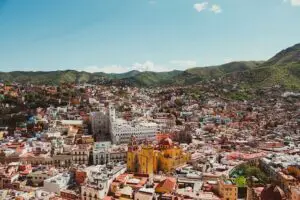
Years ago, air pollution was a major problem in Mexico. In 1992, the United Nations called Mexico City the “most polluted city in the world.”
Birds would even drop dead when flying overhead, due to the amount of smog and pollution. Pollution was the cause of over 1,000 deaths a year, and over 35,000 hospitalizations.
Mexico underwent many programs after that to drastically cut pollution and improve air quality. The city sought to get rid of older cars, removed lead from gasoline, closed or moved factories, and worked on growing the public transportation.
The greatest source of pollution was automobile related. Mexico City even instituted one day a week where private cars were not allowed to drive. They expanded on train and city bus transportation as well. All the efforts paid off and Mexico City has seen their pollution levels drop by over half. Now they are an example to many developing countries such as India and China which are now leading the world in air pollution. In fact, despite growing populations, Mexico now is around the 50th percentile for pollution levels, despite having one of the largest populations. But, Mexico’s carbon emissions are still high, as we will see later in Climate Change.
One of the problems that exacerbate the pollution situation, is that Mexico City is in the shape of a “bowl” being located in between mountains. This traps pollutants in, making the situation more drastic and the need for more pollution to be decreased. Mexico, like many other countries, still has a way to go in reducing and eliminating pollution and emissions, but it has made great progress over the past couple of decades.
Clean Water Supply
One big issue facing Mexico is the limited access to clean water.
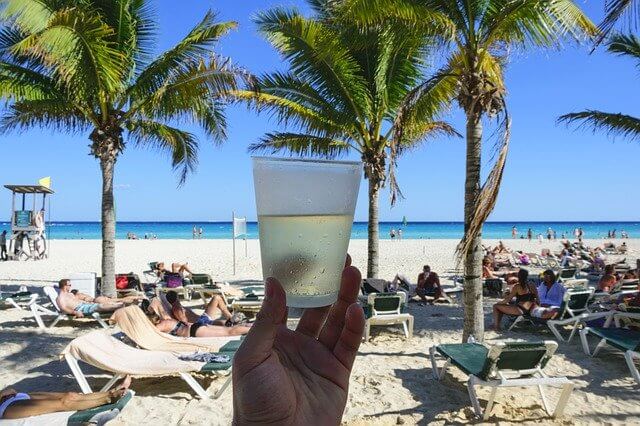
As the population of Mexico City is increasing rapidly, more water is being used from the water supplies than is being replaced. Also, the pressure being placed on the Mexico City water supply infrastructure is causing deterioration. This deteriorating water supply infrastructure is causing about 40% of all water to be lost. The supply of water is expected to be used up in as little as 30 years at the current rate.
Also, trash and debris thrown in the streets are clogging pipe drains, causing more problems with the water system. Workers frequently are fixing the drainage systems, reducing its ability to get rid of sewage water.
Many of the poorest residents are not connected to the city water system. They are forced to buy water, sometimes using 10% of their income or hours out of their week.
Some depend on city trucks to bring water, but these trucks can sometimes not come for weeks and force the people to live off very scarce amounts of water to conserve what they have. Many of the women and children must spend hours and go on long hikes in order to get water. This is time they are not using towards education or earning a living.
Many houses connected to the water supply still have limited use, only being able to get water into the houses two days a week. This causes many to end up buying larger quantities of water that are transported in, which also increases pollution.
This water is stored in storage tanks in the houses for when it’s needed. Also, the water in the homes has caused health problems due to contamination, and many have to consume large amounts of bottled water because of this.
Deep underground, Mexico City has freshwater reservoirs. These should naturally fill with water, but they are being used at a faster rate than they are being replenished.
A lot of the ground that would naturally collect the water, is covered by cement and causes water runoff instead. This runoff can contain pesticides and pollution and carries these into nearby water sources such as lakes.
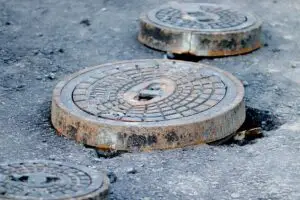 The diminishing aquifer is also causing the city to sink at an estimated 1 meter every year. This is because there is less pressure from the aquifer to push back up on the ground above.
The diminishing aquifer is also causing the city to sink at an estimated 1 meter every year. This is because there is less pressure from the aquifer to push back up on the ground above.
This is causing an increase in earthquakes and seismic activity. This further damages the water infrastructure and pipes, making matters worse.
Research is also showing that as the water below continues to be lost, it will reduce humidity in the city. This will cause higher temperatures and even more water to be lost.
There are also illegal floating houses in the south of Mexico City, polluting the waterways they float in. And farmers no longer have the water they need for their crops. Droughts have caused wells to dry up, and also areas where farmers used to wash their vegetables.
Mexico City is working for better maintenance of its current water pipes and has plans for a new underground water tunnel to help with these water conditions. The government has also announced a rainwater-catching program, to install cisterns that naturally clean and store rainwater. See Mexico City: A City That is Flooding, But is Still Running Out of Water.
Mexico has made great strides in providing more access to water in rural areas and better sanitation over the last couple decades. Water Supply and Sanitation in Mexico.
See also: Mexico’s Water Crisis
Deforestation
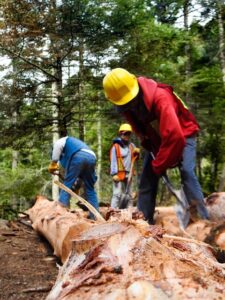
Another one of Mexico’s problems in its human environment interaction is the issue of deforestation. Deforestation is the cutting down of natural forests for commercial, agricultural, or other uses.
Central America has had some of the largest rates of deforestation in the world in recent years. Mexico specifically has lost over half of its natural forests and man-made deserts are growing.
Some of the reasons for this deforestation are certain big agricultural crops such as palm oil, pineapple, and avocados. Also, there is the farming practice of slash-and-burn agriculture which burns the trees and then moves to another area.
Some other causes are commercial and illegal logging or cutting down trees for business purposes, mining, and man-made forest fires.
The growing of avocados has created some deforestation issues in the last decade in Mexico. This is because the demand for avocados in the U.S. and elsewhere has grown so much that the price of avocados has gone up. This makes avocados very profitable for farmers.
A lot of practices involved cutting down pine and other trees in order to grow more avocados. This deforestation has been decreasing though, namely because more law enforcement has been cutting down on the practice in Mexico and making it more difficult.
See: Forests Falling Fast to Make Way for Mexican Avocado
Deforestation has an impact on the environment as a whole. Forests and trees help to prevent climate change by capturing carbon.
And the forests also help to clean the air and change carbon back to oxygen. They also house exotic species and wildlife as well as provide drinking water. Furthermore, forests can help to minimize severe weather by absorbing winds and heavy rain.
In order to improve deforestation, it’s important to teach farmers more sustainable methods of agriculture and also to cut down on the use of logging.
Climate Change in Mexico
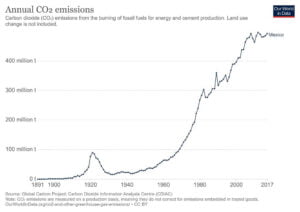
Climate change is having a big impact on the country of Mexico. Mexico’s location near the equator makes it more susceptible to climate change as well.
First, Mexico is seeing increased heat from a rising temperature, which is also causing drought. Since the 1960s, the temperature in Mexico has been rising, and it’s expected to continue rising. It may see a total temperature rise of 2.7-7.2 degrees Fahrenheit by the end of this century.
The drought is causing many farmers who traditionally grew corn, to see much lower corn yields than they used to. Mexico has always been known for its corn, which has been one of its main staple crops for a very long time.
But due to drought that is being linked to climate change, the corn crops are not receiving enough rain. This is especially true in the Southern Mexico area.
In fact, 2011 saw a tremendous drought that affected farmers. And climate change may cause a 40 to 70% decrease in crop sustainability by 2030. Which can end up being a whopping 80 to 100% decline by the end of the century.
The lack of rain and droughts are also affecting the supply of water, which was already strained, as was mentioned above.
Many farmers are switching to crops that are less dependent on rain and water, such as cactus and mezcal. The government has also produced a strain of corn which needs less water to survive.
In order to make an impact on the climate change threat, the Mexican government passed a climate change bill in 2012. It’s set to cut emissions by 50% by 2050, and to get 35% of its energy from clean energy sources. See Climate change in Mexico
But recently Mexico has not been following through on its pledges for renewable energy and seems to be making negative steps backward. See A power outage dims climate change hopes in Mexico
Another factor that might begin to affect Mexico due to climate change is the rising water levels caused by climate change. Mexico has a large amount of coastal land that could be affected.
Soil Erosion & Beach Erosion in Mexico
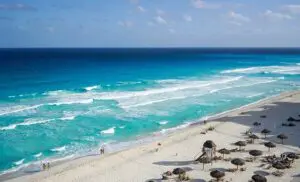
Mexico has also been seeing both soil erosion as well as beach erosion. Beach erosion in Mexico may have numerous causes.
One of those being less natural plants growing in the sand to hold the sand in place. A lot of natural vegetation has been cleared out in tourist locations like Cancun.
The Playa Del Carmen beach has also been seeing erosion. This loss of beaches can negatively affect Mexico’s tourism.
Positive Interactions in Mexico
Mexico has made great strides in reducing emissions and cleaning the air quality of Mexico City. Mexico City went from being one of the most polluted cities in the world to having drastically better air quality than what was seen decades ago.
This was partly accomplished by improving mass transportation as well as cutting down on public driving.
Also, Mexico has been working on providing more clean water to its citizens.
Natural Disasters in Mexico
Mexico experiences numerous natural disasters caused by the environment that have an impact on the people living there and the land.
Hurricanes
Mexico has a hurricane season and experiences hurricanes from both the Pacific Ocean and the Gulf of Mexico. These hurricanes can also be followed by mudslides, and flooding, with the coastal areas being impacted the most.
Earthquakes
Because of Mexico’s location, it has a history of earthquakes. These can be catastrophic and take lives.
Volcanoes
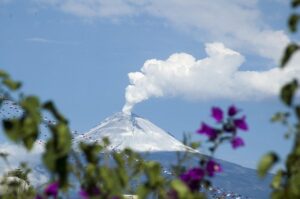
Mexico has around 3,000 total volcanoes. 48 of them are considered active.
How Do Humans Adapt to the Environment in Mexico?
Mexico is a very hot and sunny place being near the equator. The people wear lighter clothes to accommodate for the heat. They also have adapted darker skin which helps to protect against the sun’s rays.
The people also rely on the environment to grow many different foods and crops. As weather and rain conditions are changing, they are adapting different farming techniques and also planting and growing different crops that require less water for growth. Those that live by the ocean use fishing as a means of getting food.
Mexico also has built dams to control water and the El Cajon Dam is a hydroelectric dam to produce power from the environment. Mexico also has put in place water management resources and aquifers to supply water to the inhabitants and those living in more rural areas, further away from water sources.
Summary of Human Environment Interaction in Mexico & Mexico City
The Human Environment Interaction in Mexico involves the people of Mexico relying on and using the land and climate for food and crops. The economy relies on its tourism section, and the land provides many natural resources.
But Mexico is also impacting the environment and issues are being seen. Some of these are directly from the pollution from Mexico and transportation and business, and some are from global causes of climate change.
The environment of Mexico has been reacting negatively. This is all why Human Environment Interaction is important in Environmentalism.
Pollution has improved in Mexico, but there is still a way to go. There are also still issues with deforestation and access to clean water.
Lance has been passionate about the plant-based diet and we have been following a whole food plant-based diet for over 5 years. We focus on health, natural healing, weight management, animal rights, and the health of the planet and environment by focusing on whole plant-based foods and sustainable practices.
Learn more at the About Me page and follow on social media at the links below.

